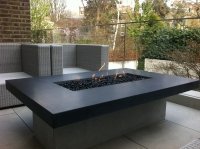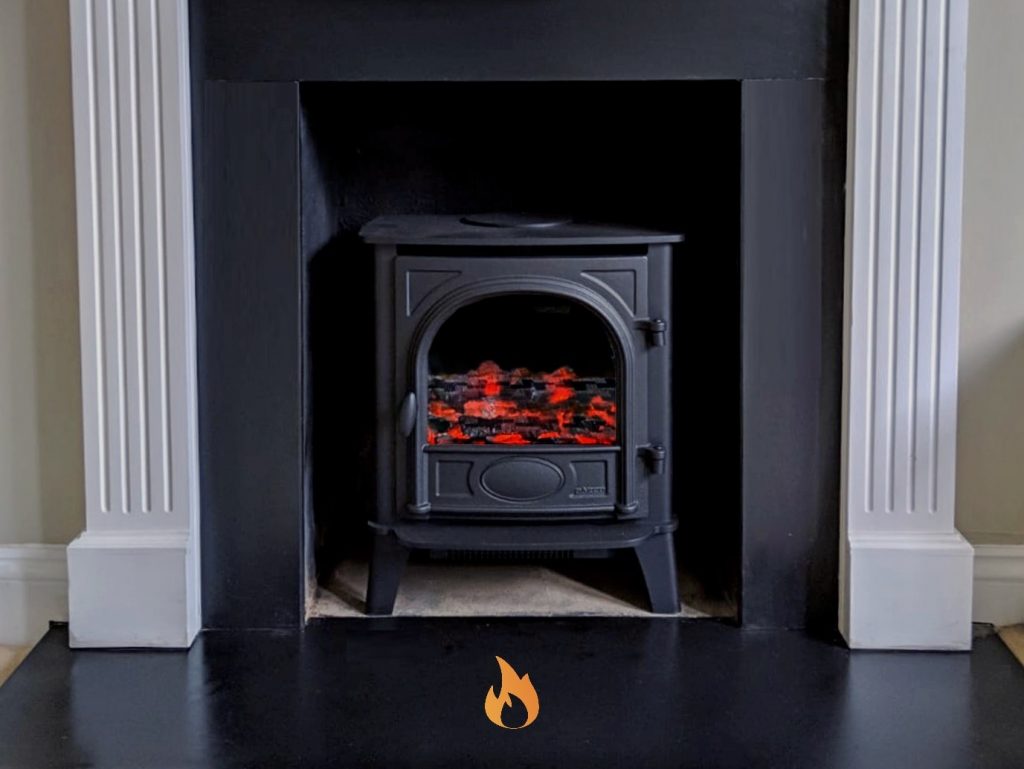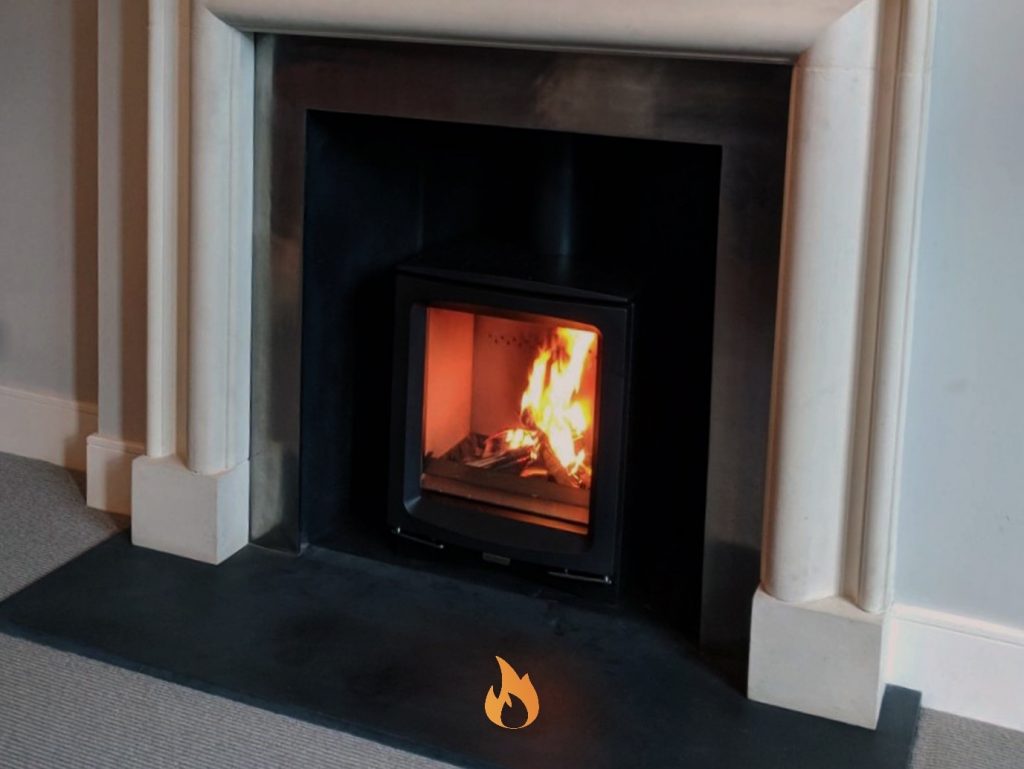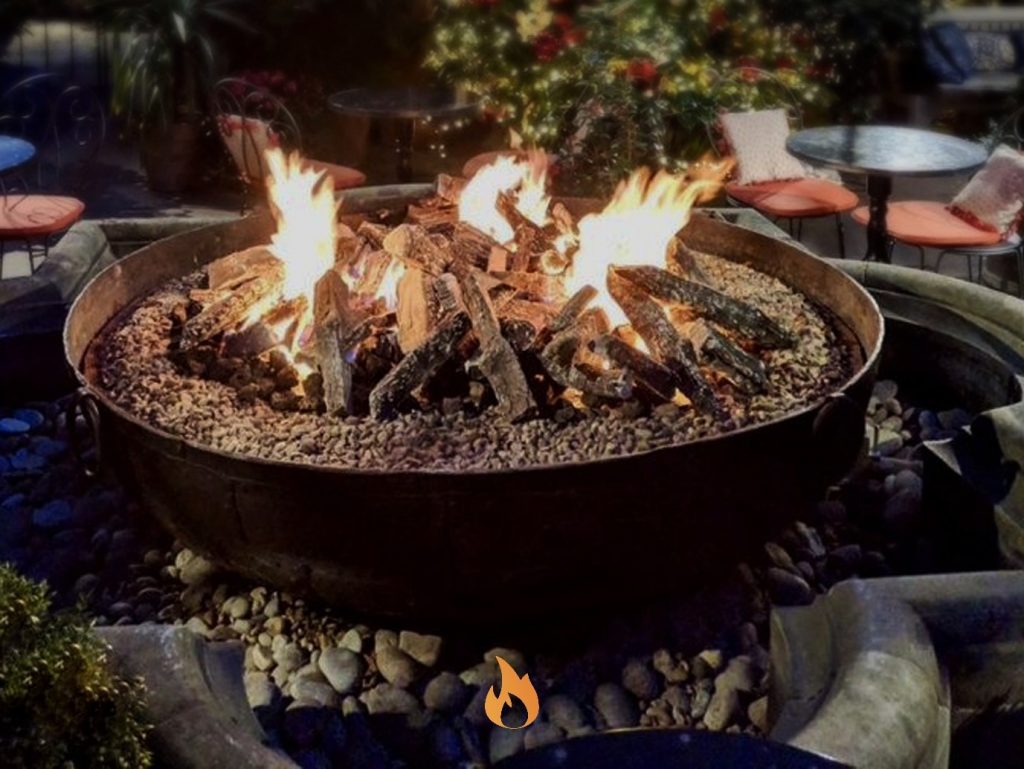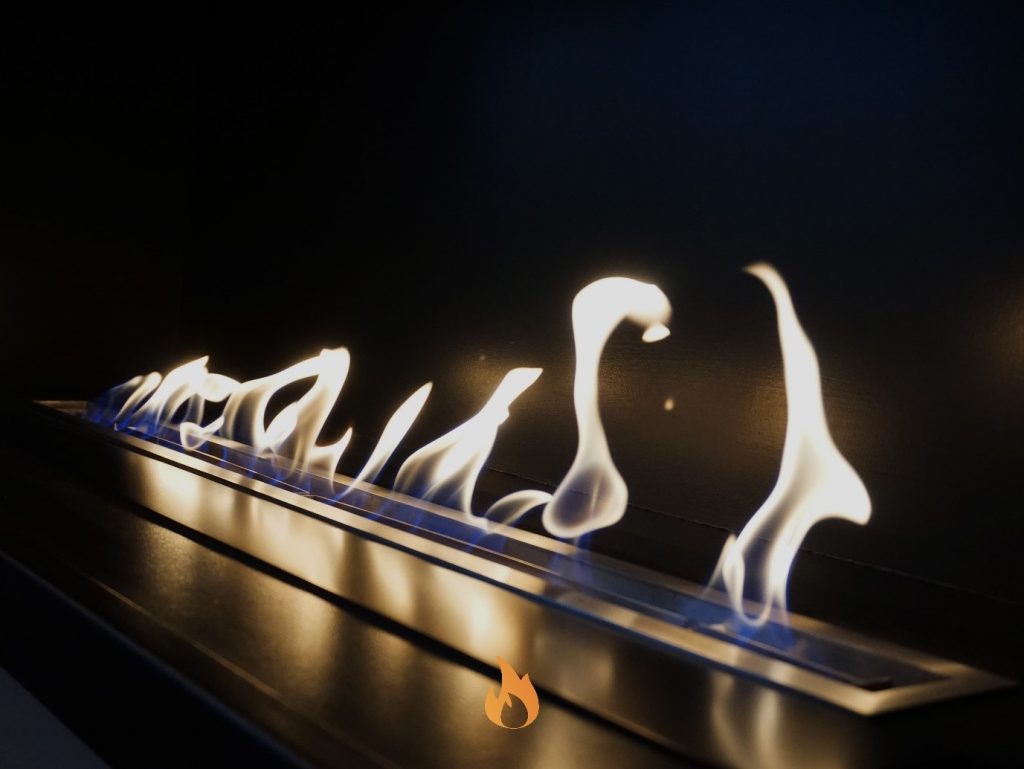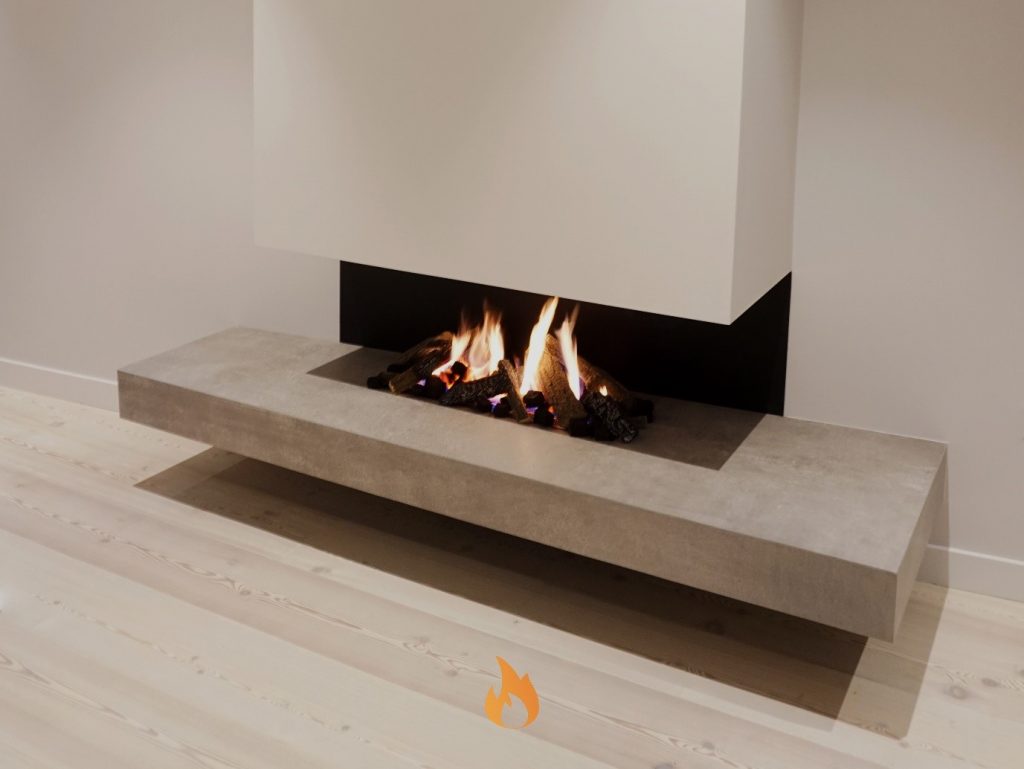When it comes to choosing a fireplace, your final decision can be influenced by many factors, from the initial cost of the unit and the cost of running your fireplace to its expected heat output and effect on the environment. Whilst you may have your sights firmly set on a particular type of fire, it is well worth considering all the different types of fireplaces available to you in today’s market. Bioethanol fires in London have seen a sharp upturn in popularity for a number of reasons, with gas fires in London also selling particularly well. Alongside this, wood stoves in London and electric fires in London also continue to gain a steady stream of sales and enquiries too.
In this article, we will take a look at the four main different types of fireplaces on the market, comparing several of the key attributes you are likely to be looking for when purchasing a fireplace.
Cost
Bioethanol Fires – You can pick up a bioethanol fire for as little as £600 for a manual fire. If you are looking for a remote control bioethanol fire, you can expect to pay anywhere from £4,000 to £20,000.
Electric Fires – One of the cheapest options available on the market today, electric fires combine efficiency and cost-effectiveness. You can expect to pick up a middle of the range electric fire for as little as £600.
Wood Burners – The charming appeal of wood burners means they come at a cost, with some fires costing around the same price as bioethanol fires. The average price for a quality wood burner is around £950.
Gas Fires – Coming in at a similar price point to electric fires, gas fires boast stunning aesthetics at a cost-effective price. Typically, you can pick up a gas fire for as little as £395, but some models cost considerably more.
Running Cost/Efficiency
Bioethanol Fires – With no chimney taking any heat away, any heat generated by a bioethanol fire is circulated throughout the room. Bioethanol fuel can be quite costly, but the efficiency of this burner is unrivalled. On average, bio-ethanol fires will burn for around 5 hours, with 1 litre of fuel costing around £2.50.
Electric Fires – The most modern electric fires are extremely efficient. But it is worth noting that electricity is widely regarded as one of the most expensive forms of heating on the market today. On average an electric heater will cost around 12p to run each hour.
Wood Burners – On average, wood burners operate at around 80% efficiency. Just remember that you will need to purchase wood though; this can make the cost mount up over time.
Gas Fires – Widely regarded as one of the most efficient forms of heating on the market today, gas fires are capable of quickly heating a room with very little gas used in the process. Gas fires cost around 5p per kW to run, which means you can heat your room efficiently and economically.
Heat Output
Bioethanol Fires – Most manual bioethanol fires available on the market today are capable of outputting between 1.7kW and 8.5kW, which is a perfectly acceptable heat output for most homes. Remote control models are capable of putting out between 2.25kW and 15kW of heat.
Electric Fires – Electric fires are fantastic if you are looking to heat a room immediately, as warm air is pushed out immediately. Though they are best used in smaller rooms in your home, as they can be costly when heating large rooms. Typically, you can expect to see between 1.2kW and 1.7kW output from most electric heaters on the market today.
Wood Burners – Heat output from wood burners vastly varies based on the setup and your chimney. On average, wood burners are a little slower than other forms of heating but once at an optimal temperature; they maintain the level of heat in the room extremely well. Heat output can be anywhere between 2.5kW and 4.5kW depending on the type of wood you choose to use.
Gas Fires – Perfect for heating rooms of varying sizes, gas fires are capable of efficiently and quickly providing a lot of heat to your home. On average, gas fires will produce around 2.5kW of heat, but more efficient models can output up to 6kW.
Effect On Environment
Bioethanol Fires – Undoubtedly the most environmentally friendly form of heating available today, bioethanol fuel is completely composed of biological products, and its combustion gives off a clean emission and is instantly renewable.
Electric Fires – Electricity doesn’t directly release any pollution into the air itself, but it’s worth noting that electricity plants do have a slight effect on our environment.
Wood Burners – Whilst it is fair to say that a genuine wood fire is a sight to behold, wood smoke is more polluting than any other form of fireplace fuel in some way.
Gas Fires – Whilst burning gas does produce a small amount of carbon monoxide; gas fires are one of the most environmentally friendly forms of heating your home currently on the market.
Aesthetics
Bioethanol Fires – The biggest draw for bioethanol fires is in that they don’t require a flue or chimney to operate. This means you can have a bioethanol fire installed anywhere in your home, giving them an almost limitless design potential.
Electric Fires – Generally more suited to modern interiors, electric fires have a whole host of designs which are sure to appeal to all preferences. Real flame electric fires also mean you don’t have to compromise on the ambience created by traditional fires.
Wood Burners – Wood burners are more suited to a traditional interior design. Many homeowners who have recently purchased a home with plenty of character and history are drawn to this type of fire.
Gas Fires – Available in a wide range of styles, gas fires are perfectly suited to almost any existing interior design. Modern, traditional and contemporary styles are all available to purchase.
Installation
Bioethanol Fires – It couldn’t be simpler to install a bioethanol fire in your home, with no flue or chimney required, you are able to simply place your fire wherever you like.
Electric Fires – Like bioethanol, it’s as simple as it gets when it comes to installation, simply install the electric fire where you like and plug in.
Wood Burners – Wood burners require a chimney to rid of the smoke created when burning the wood. If there isn’t a pre-existing chimney installed, this process can become quite costly and, in some cases, difficult.
Gas Fires – Gas fires can be installed anywhere there is a gas supply that has a chimney or flue. It’s worth noting that it’s extremely simple to convert an existing wood-burning fireplace into a gas fireplace.
Maintenance
Bioethanol Fires – With bioethanol’s fumes being completely environmentally friendly, there is no real need for upkeep on this type of fire.
Electric Fires – Very minimal upkeep is required on an electric fire, simply clean and dust the vent occasionally.
Wood Burners – With ash generated when the wood is burnt, your chimney will need professionally sweeping and servicing at least once a year.
Gas Fires – Gas fires are ideal if you are in the market for a fireplace which requires very little upkeep, with no ash residue created by the gas flames.
Safety
Bioethanol Fires – Create a small amount of carbon dioxide when burnt, bioethanol fires are considered safe to use both in and outside of the home. It is worth noting that this type of burner does create real flames, so precautions must be taken to ensure the safety of children around the unit.
Electric Fires – Electric fires are considered a low fire risk and create heat without any harmful emissions. Modern electric fires are now designed so the outer casing is kept cool too, so this is perfect if you have young children or pets around the unit.
Wood Burners – Wood fires present the same risks as both gas and bioethanol fires. Fire cages help minimise risk, but extra care must be taken by anyone close to the burner.
Gas Fires – The real flames created by gas fires do pose a danger to children and animals, however, it’s worth noting accidents can be avoided by investing in a fire cage to protect the fire.
Real Flame’s View
Bioethanol Fires – A stylish and modern alternative to other heating solutions, bioethanol fires offer environmentally friendly heating for almost any area within your home. Perfect for any home which is looking for a modern twist, bioethanol fires should be considered by any homeowner looking to inject some character into their living space.
Electric Fires – If you are looking for a cost-effective heating solution, which is capable of fitting in with any existing interior design, an electric fire is perfect for you. It’s worth considering an electric fire as an efficient way to heat smaller rooms within your home.
Wood Burners – Perfect for any homeowner who is looking to make a bold statement with their fireplace. Wood fires offer a stunning traditional aesthetic but must be maintained properly to ensure they operate at optimal levels throughout their lifetime. Wood fires are ideal for large rooms, as they are capable of outputting significant heat.
Gas Fires – A favourite among many homeowners, gas fires offer the best of both worlds, combining real flames, with convenience paired with a cost-effective heating solution. Regardless of the look you are going for within your home you can rest assured that a gas fire will fit in with any existing interior design.
If you are in the market for a brand new fireplace, then why not get in touch with the expert team here at Real Flame? We have years of experience installing a wide range of fireplaces in a whole host of settings, from domestic to commercial, so be sure to call into our showroom, or give us a call on 0207 731 5025, and we will be more than happy to assist.
Get in Touch with Real Flame for more Advice and Information











